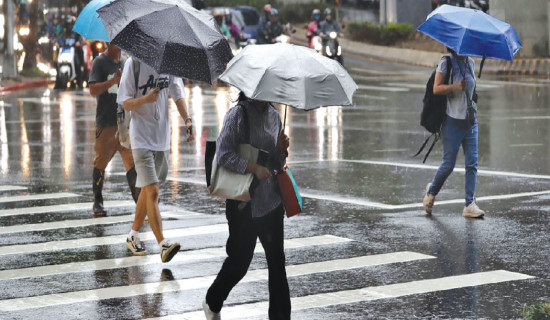- Thursday, 11 December 2025
Upper Koshi basin region vulnerable to disasters
Kathmandu, Dec. 20: The upper Koshi basin region, where 18 potentially dangerous glacial lakes are located, is highly vulnerable to outburst floods from such lakes located high in the mountains.
A recent report published by the International Centre for Integrated Mountain Development (ICIMOD) says that the area is prone to multiple disaster risks, ranging from high-risk events such as glacial lake bursts, earthquake-induced rock falls and landslides.
Other disasters with relatively lower risk such as forest fires and hailstorms are also pose risks in the region.
The ICIMOD report titled “Strengthening transboundary collaboration towards disaster risk reduction in the Upper Koshi Basin,” shows that 42 potentially dangerous glacial lakes are located in this region – 18 in Nepal and 24 in China. Recent increases in glacial melts have raised more concerns about these disasters.
Sixty-three glacial lake bursting events have been reported between 1921 and 2021 in the upper Koshi basin region. A total of 6,872 landslides were documented in the area during 1992‒2015 period. Of them, 97 per cent of these disasters occurred in Nepal.
In 2014, the debris from the Jure landslide created a natural dam across the Bhotekoshi River in Nepal, creating an artificial lake of 2.5 kilometres wide and 3 km long, and sending an emergency alert in the areas as far as northern Bihar in India, the report said.
To discuss the multi-hazard disaster risks in the region, the ICIMOD recently organised Koshi Disaster Risk Reduction Knowledge Hub (KDKH), an Annual Dialogue, 2022 in Kathmandu.
Dr. Neera Shrestha Pradhan, Programme Coordinator of Koshi Basin Initiative, River Basins and Cryosphere at ICIMOD, said the annual dialogue is a part of education about the region. Experts from Hindu Kush Himalaya (HKH) and outside the region had gathered in Kathmandu to share their science-based knowledge, research and outcomes.
Anil Pokhrel, Chief Executive at the National Disaster Risk Reduction and Management Authority (NDRRMA), said, “We have failed in communicating risk information in the language understood by the decision makers and the local people. We hope that we can collectively try to understand our challenges.”
Watersheds data for the entire basin would be a great source of information to address the challenges, he added.
Managing water resources is challenging in the region, given the increase in demand for water needs and the impact of environmental and climate change, and visible demographic changes, said Izabella Koziell, Deputy Director General of ICIMOD.
COP 27 established a fund for Loss and Damage, and dialogue such as the KDKH provides a platform to share and discuss the issues faced by the basin and make a stronger case for the communities in the basin, he added.
As the Koshi River enters the plains of Nepal and further south in India, the population density jumps to more than double the UKB region. Any major disaster originating in the UKB region thus immediately poses a threat to a significant population (around 40 million) in the Lower Koshi Basin region, the paper said.
The Koshi River, known as the ‘Sorrow of Bihar’ in India, is estimated to cause a damage worth billion dollars annually.
Meanwhile, glacial lakes in Nepal are increasing in numbers and sizes. Hanging glaciers surrounding the lake, glacier calving, icefall and rock fall are capable of triggering glacial lake outburst flood (GLOF) events, the experts said.
An increased number of hydro-meteorological stations at a higher elevations and early warning systems are necessary for the efficient monitoring of these lakes for preventing loss of lives from potential GLOF events, they suggested.
They said the multi-hazard risks in this region cannot be managed without a proactive, transboundary, and multi-stakeholder collaborative effort between the two riparian countries – China and Nepal.
















